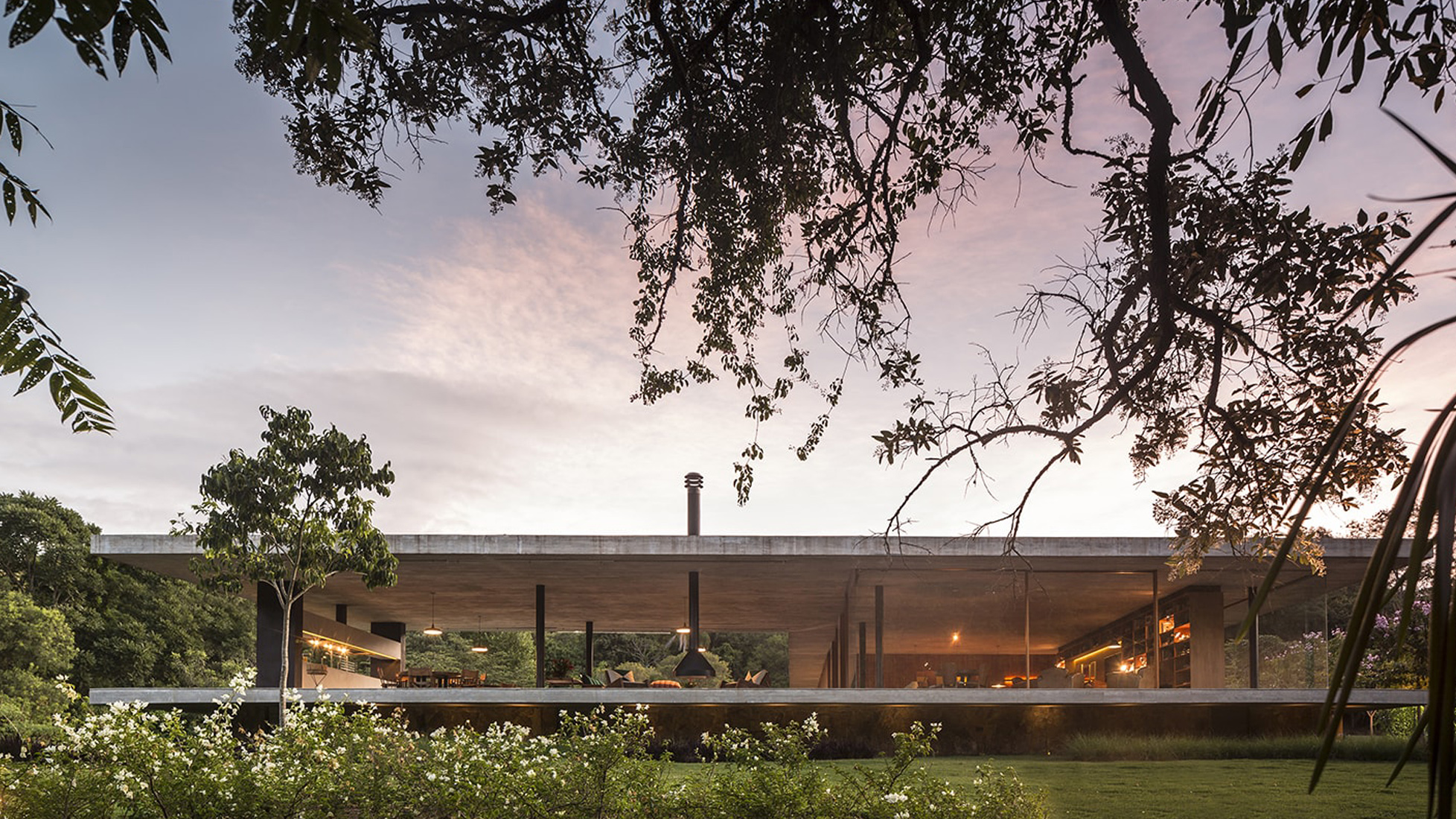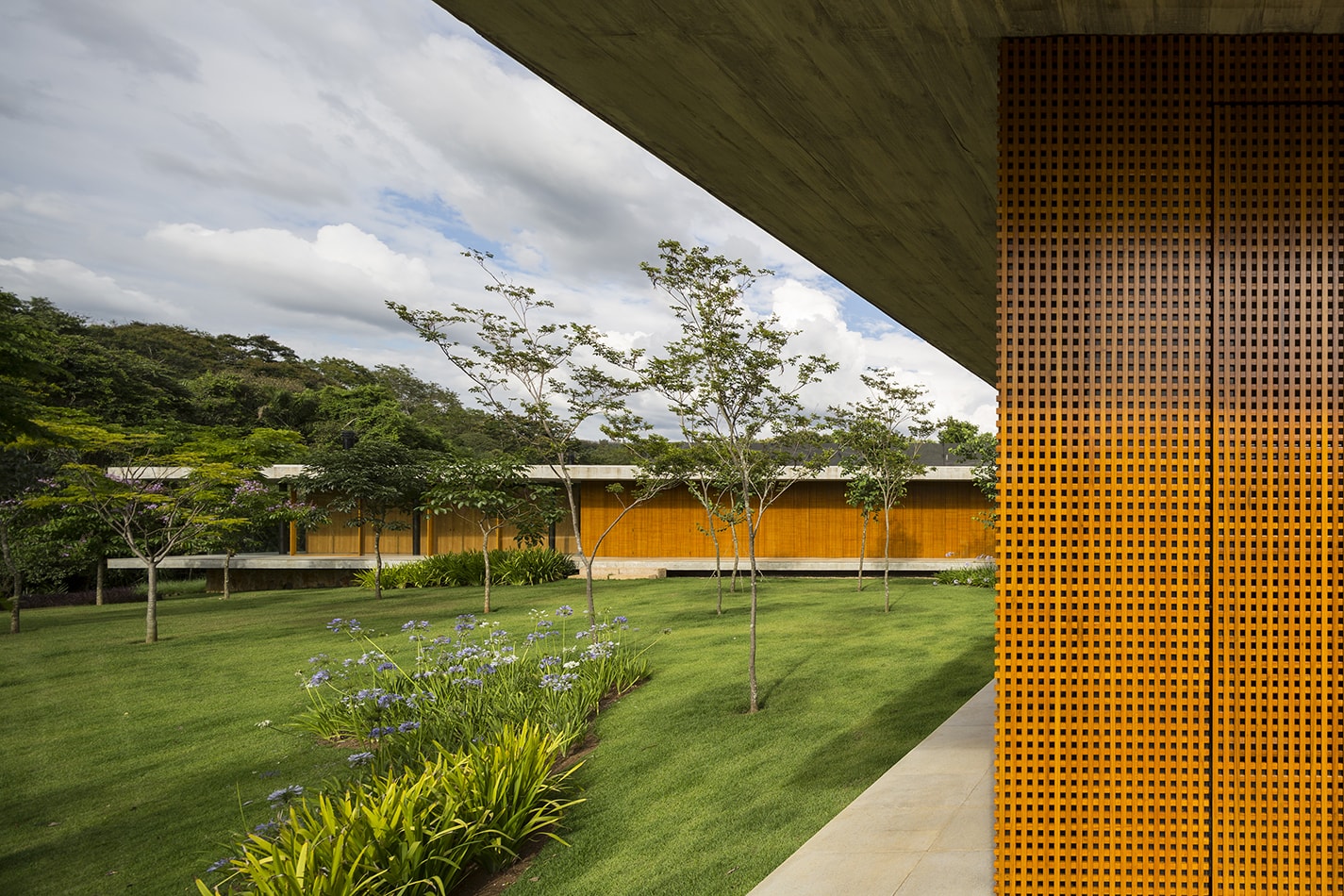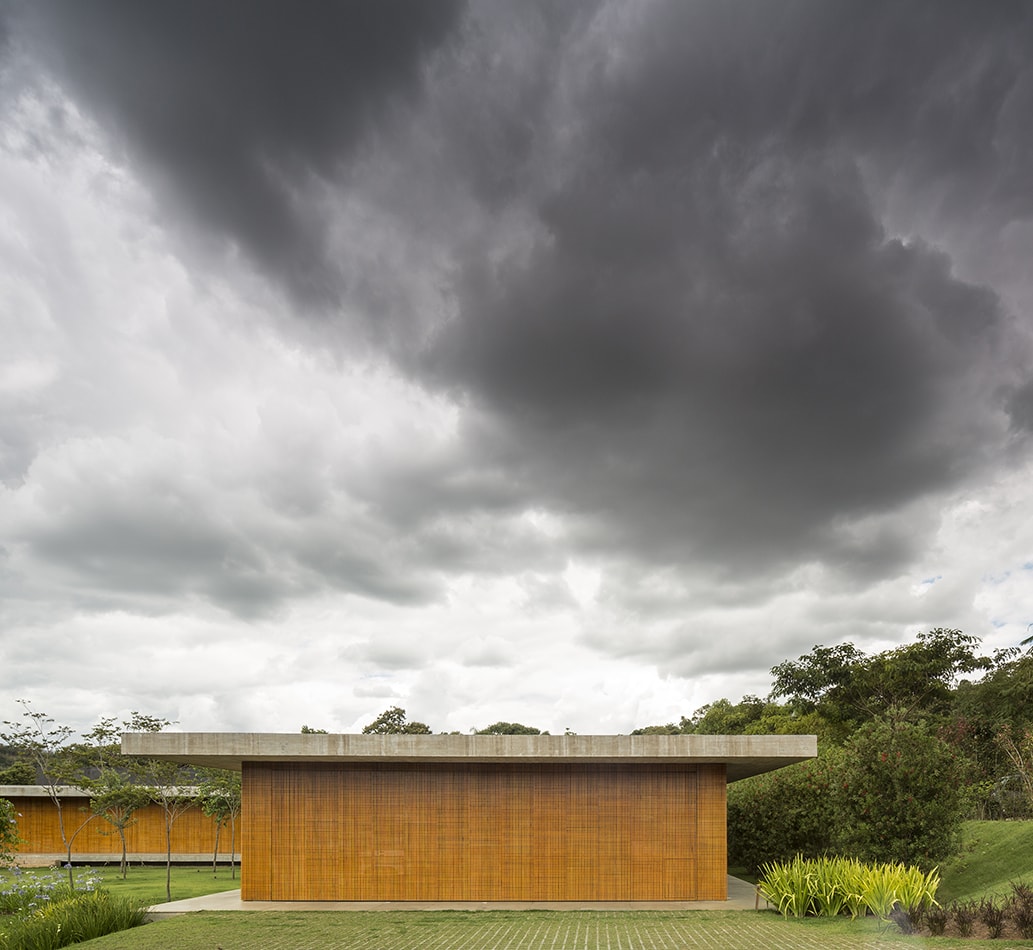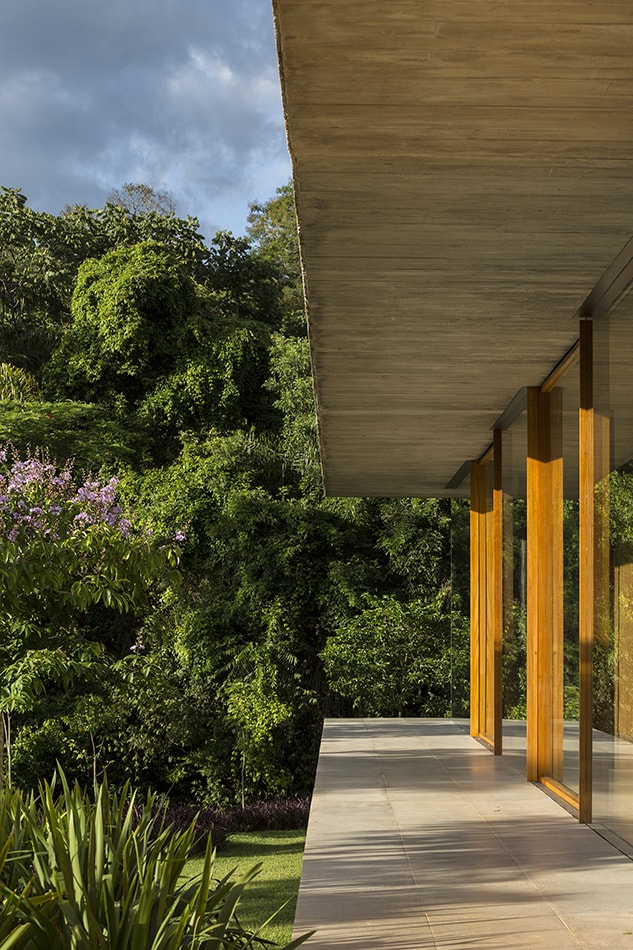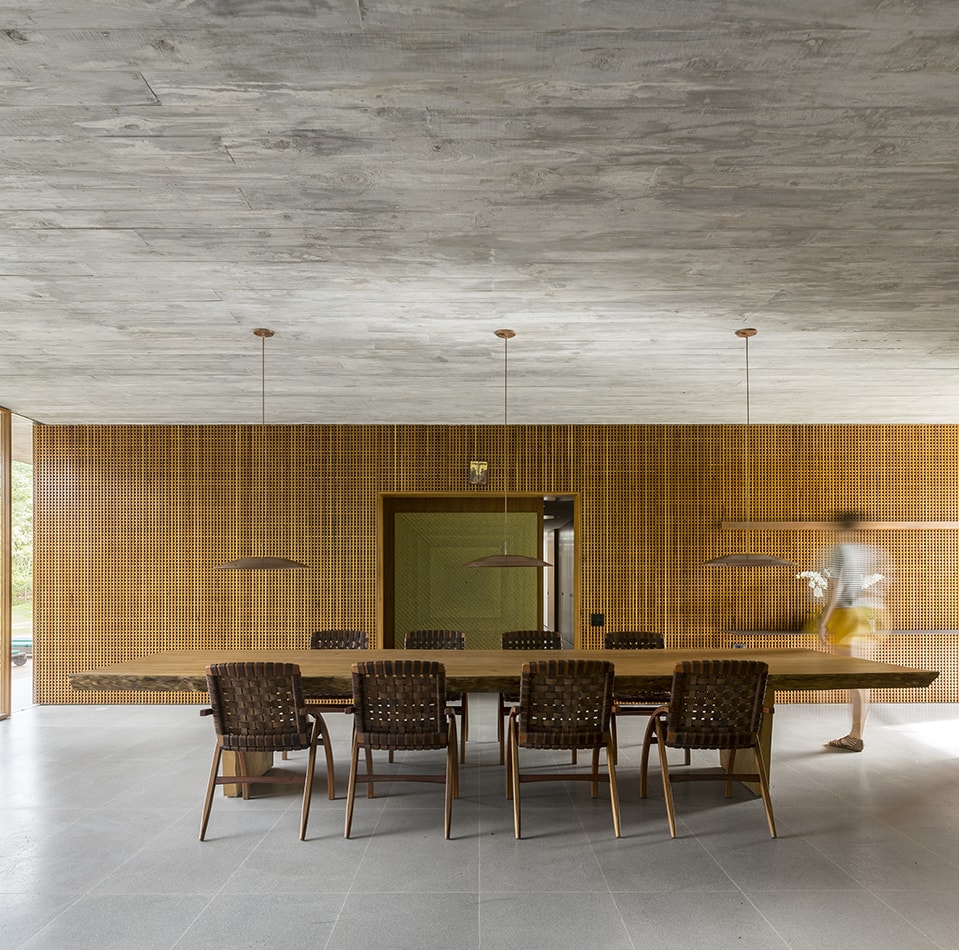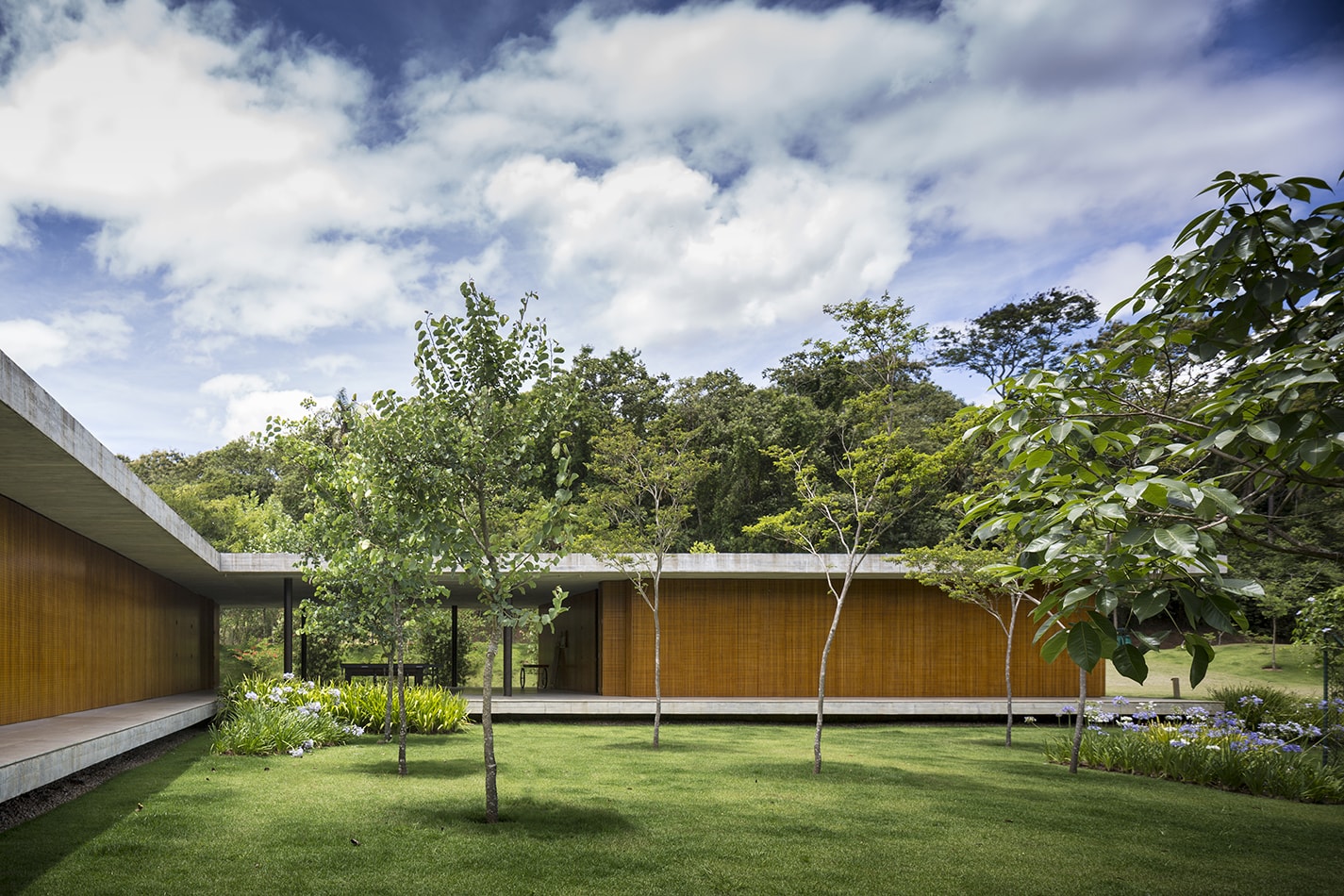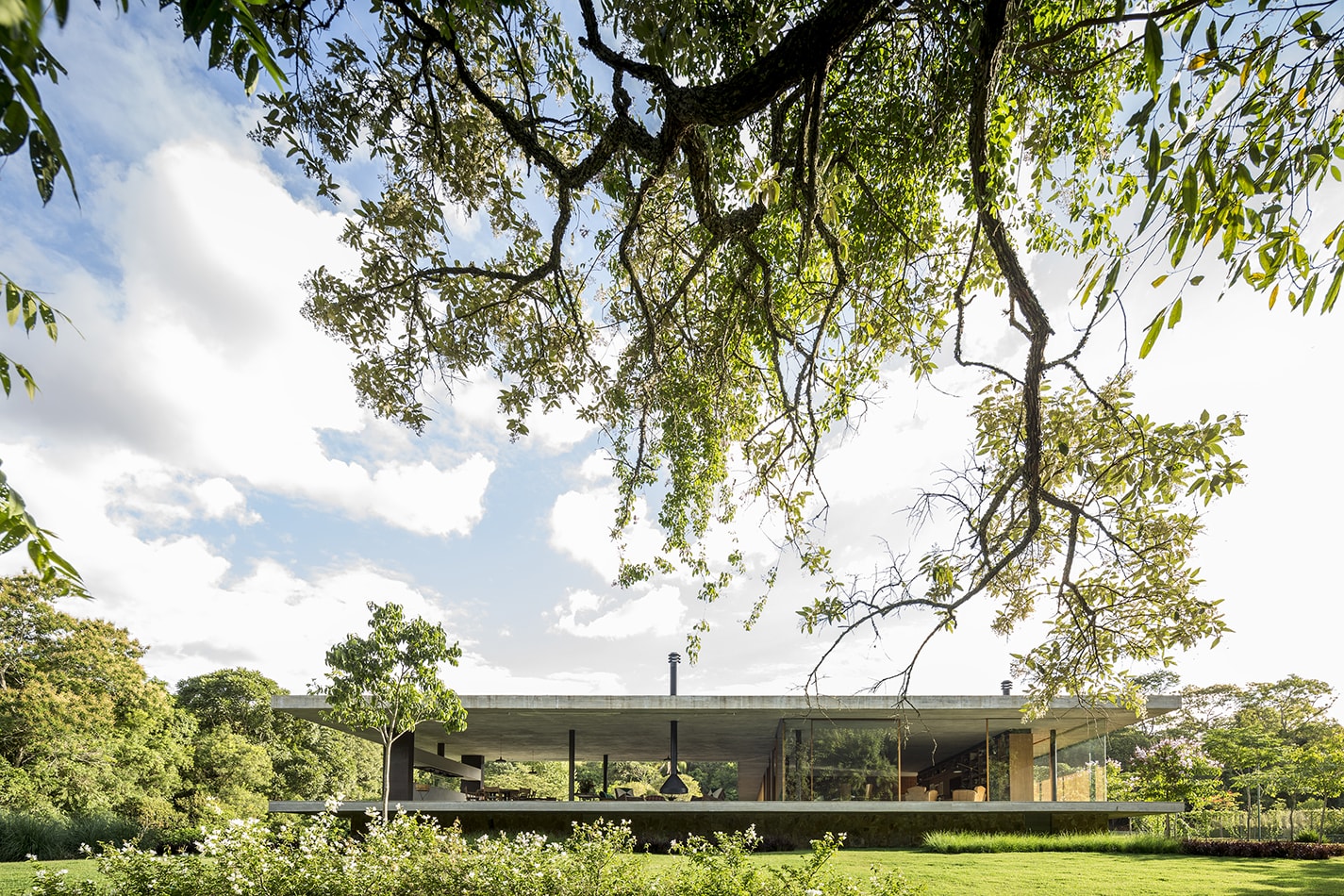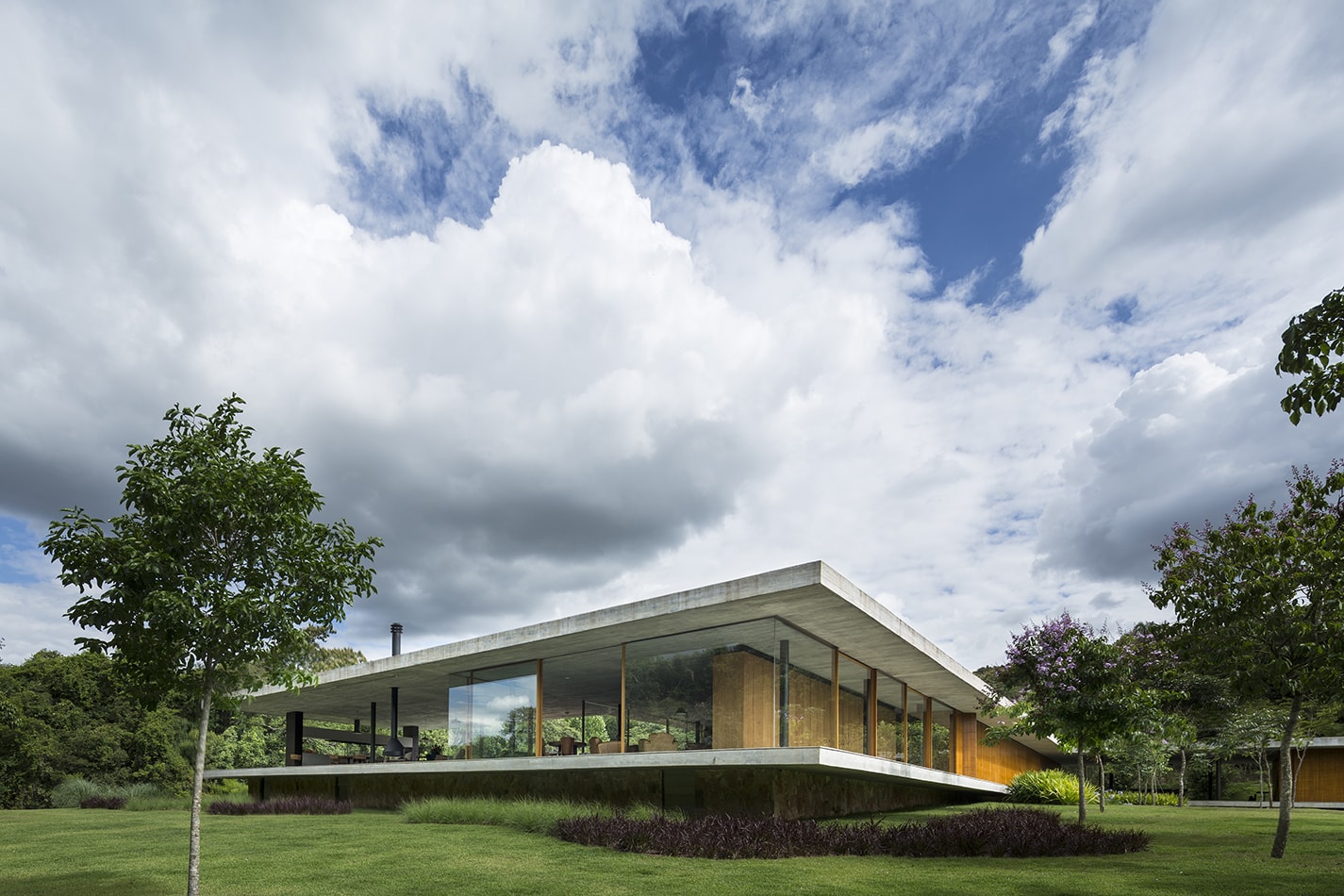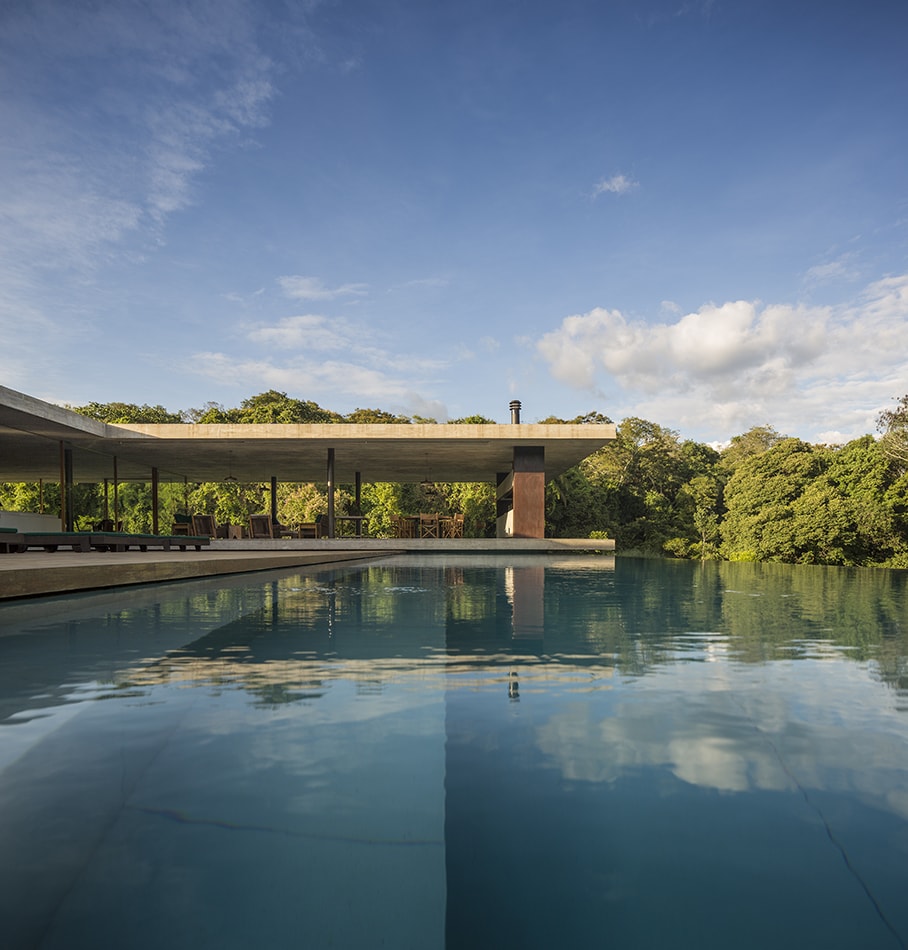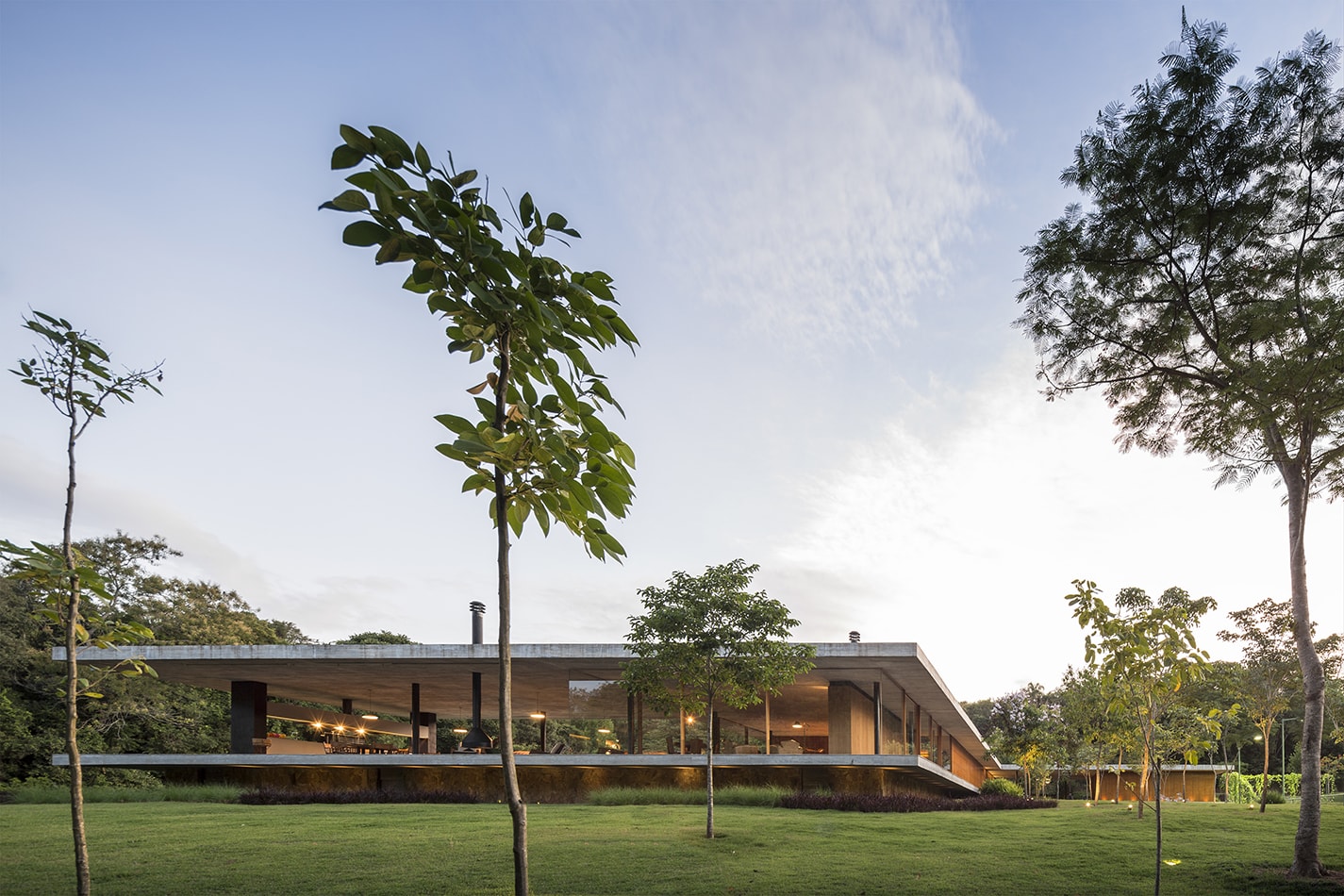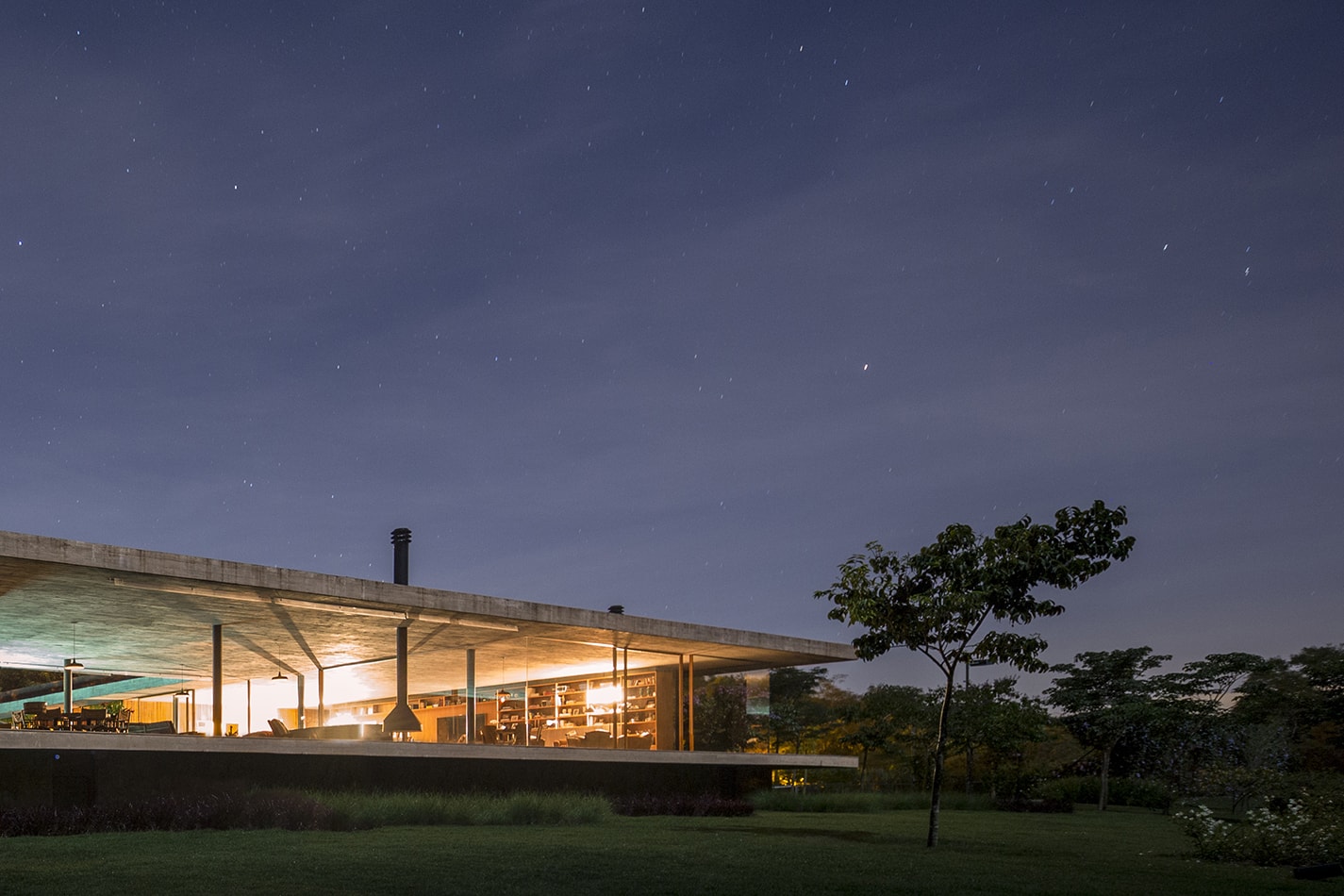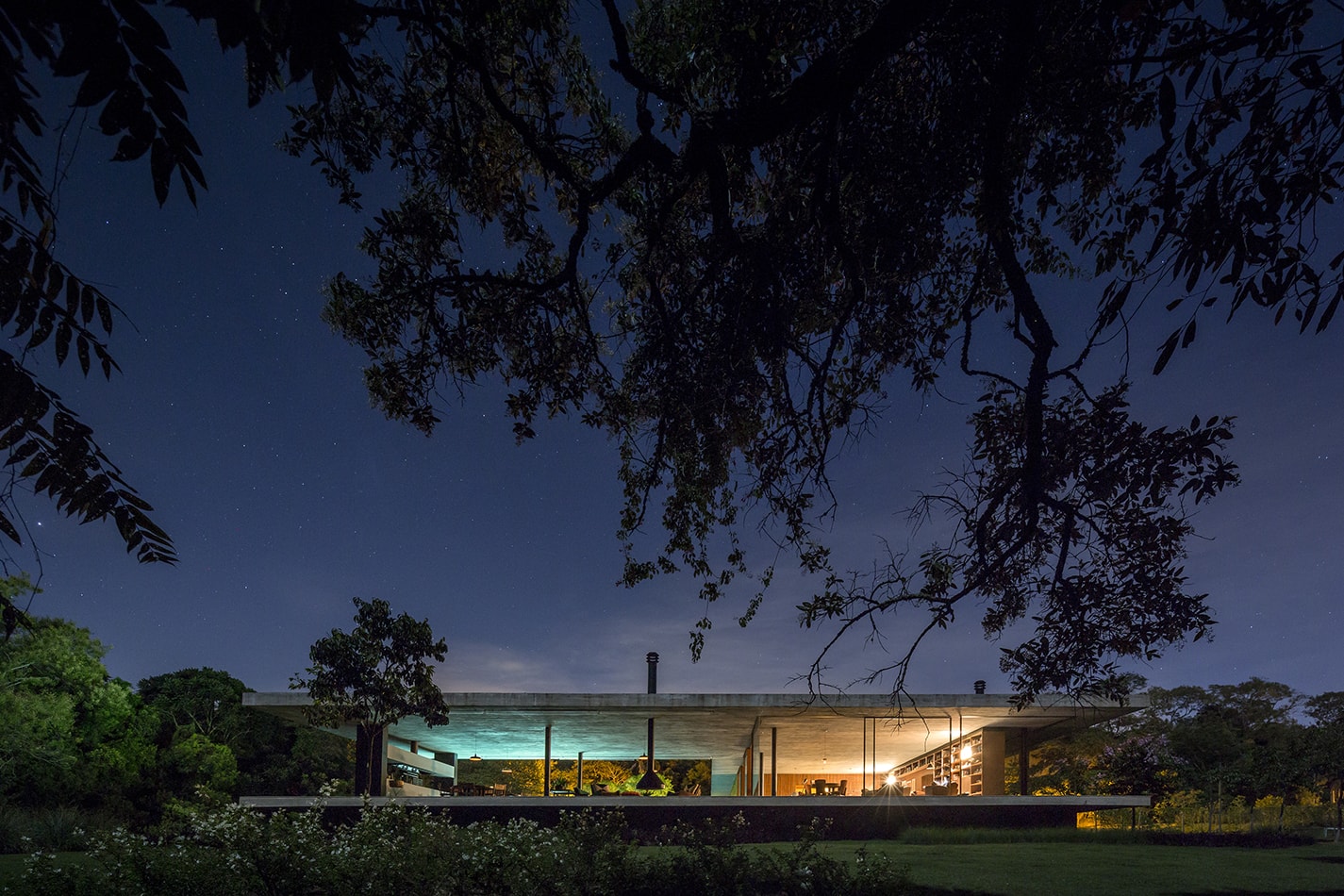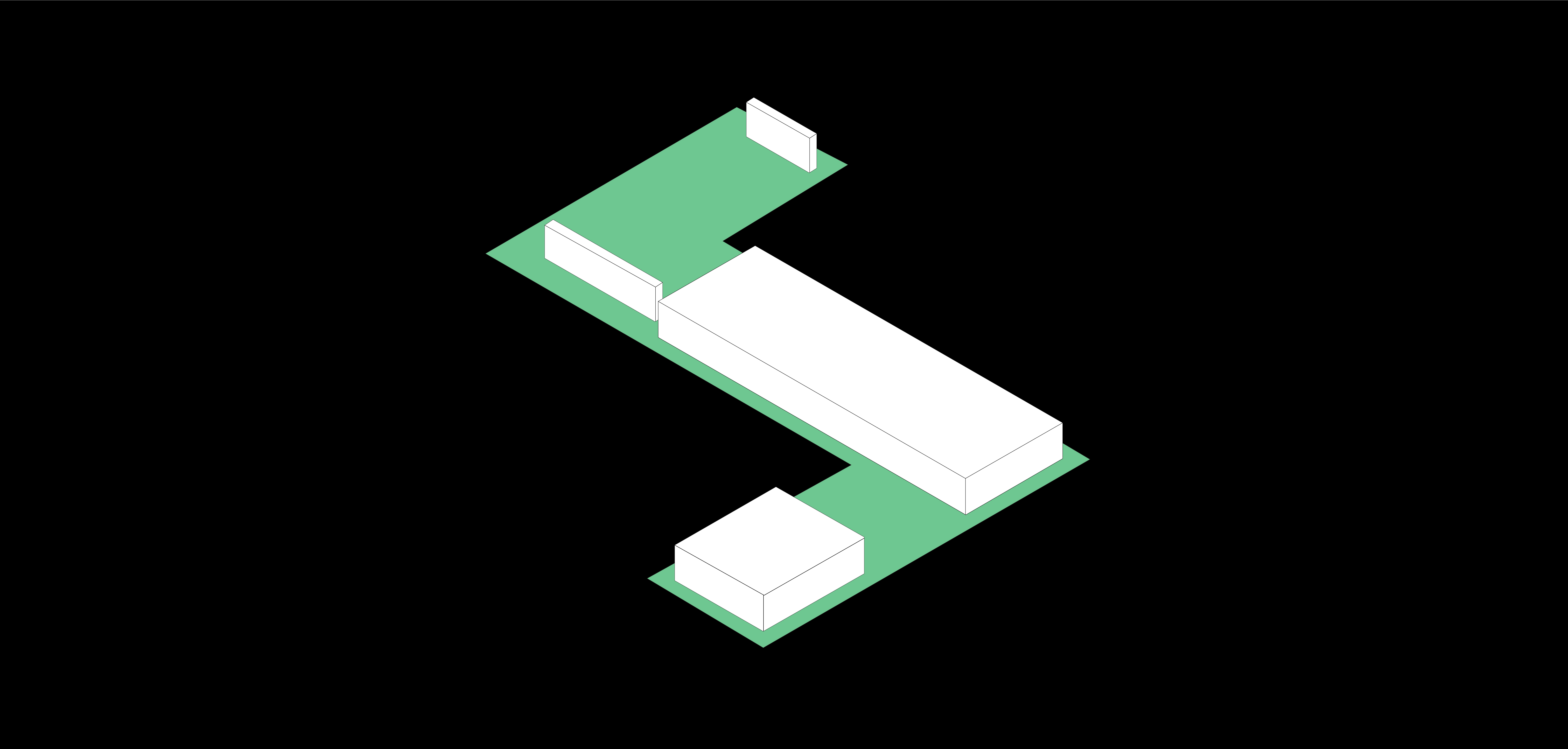Z House – located in Bragança Paulista, the countryside of São Paulo – revisits the idea of a house-pavilion built from two equal flat slabs, previously seen in Redux House (2009-2014).
In this case, the first slab does not only float detached from the ground, but it also becomes more distanced from the ground as the topography drops, revealing a stone base: the tectonic elevation of the structure rips out mass from the floor. This operation gives room for a technical area under the house, which serves as a basement for machines and infra-structure.
The house location in the middle of the plot derives from a survey assessment and, thus, avoided large gradients between the slab and the earth which would require railings – undesirable visual interferences. The perimeter of the entire construction configured, therefore, as a type of sidewalk with infinite circulation to involve all of the spaces.
Different than Redux House, here the verandas voids are not in front of the glass-enclosed living room but rather as interstices within the concrete slab sandwich. The North veranda works as an open living room equipped with kitchen and fireplace. On the south, the void houses the game room.
First design versions elaborated a L-shaped plan, but once the client bought the plot next door still during the architectural concept phase, another leg has been added to form the Z.
Gabriel Kogan
location > bragança paulista . sp . brazil
project > june . 2009
completion > april . 2014
site area > 3.020 sqm
built area > 995 sqm
-
architecture > studio mk27
architect > marcio kogan
co-architect > suzana glogowski
interior design > diana radomysler
architecture team > maria cristina motta . oswaldo pessano . ricardo ariza
communication team > carlos costa . laura guedes . mariana simas
-
contractor > cpa
structure engineer > benedictis engenharia
landscape designer > cecilia berlink
-
photographer > fernando guerra
Z House – located in Bragança Paulista, the countryside of São Paulo – revisits the idea of a house-pavilion built from two equal flat slabs, previously seen in Redux House (2009-2014).
In this case, the first slab does not only float detached from the ground, but it also becomes more distanced from the ground as the topography drops, revealing a stone base: the tectonic elevation of the structure rips out mass from the floor. This operation gives room for a technical area under the house, which serves as a basement for machines and infra-structure.
The house location in the middle of the plot derives from a survey assessment and, thus, avoided large gradients between the slab and the earth which would require railings – undesirable visual interferences. The perimeter of the entire construction configured, therefore, as a type of sidewalk with infinite circulation to involve all of the spaces.
Different than Redux House, here the verandas voids are not in front of the glass-enclosed living room but rather as interstices within the concrete slab sandwich. The North veranda works as an open living room equipped with kitchen and fireplace. On the south, the void houses the game room.
First design versions elaborated a L-shaped plan, but once the client bought the plot next door still during the architectural concept phase, another leg has been added to form the Z.
Gabriel Kogan





